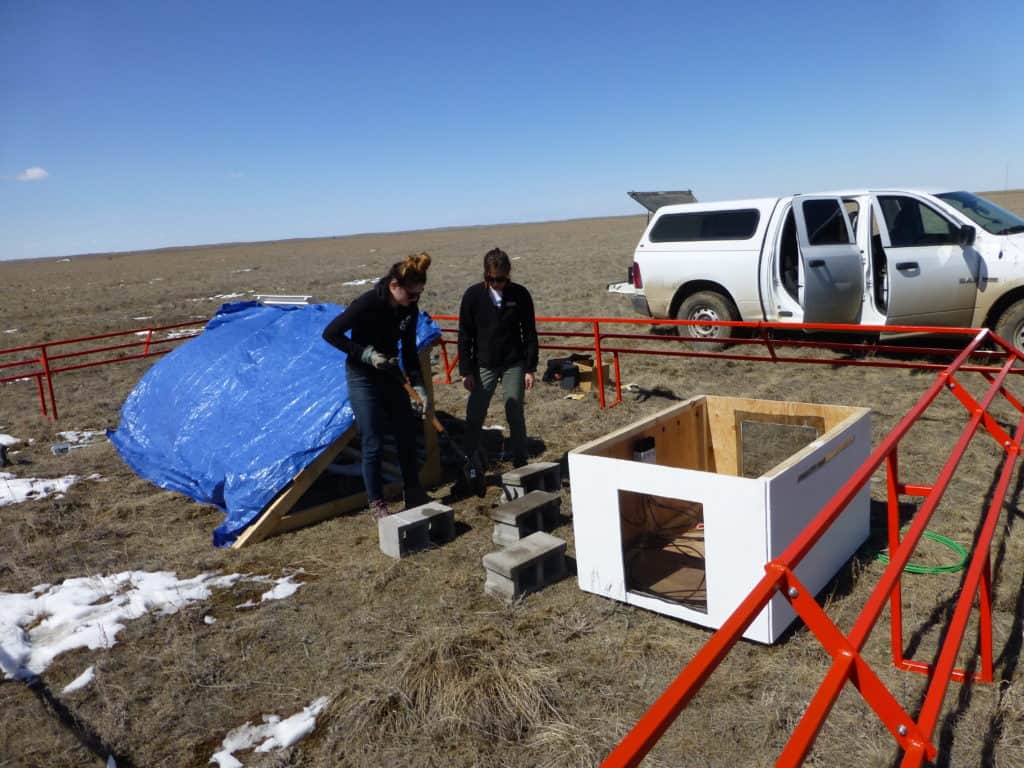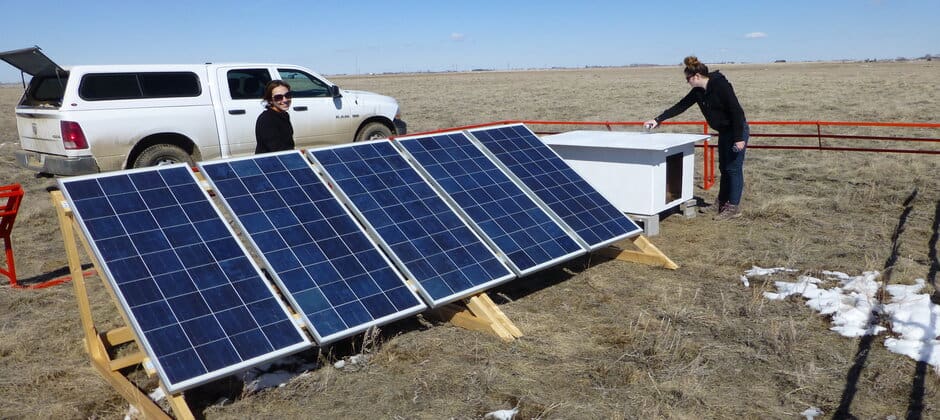Share this article
Oil drilling noise impairs endangered songbird nesting success
Occasional, loud bursts of noise are disrupting threatened songbird species in the Canadian prairies.
Oil pumpjacks are found all over southeastern Alberta prairie lands, which is also home to many Canadian songbird species. Researchers knew fewer birds were showing up in areas with oil infrastructure, but they weren’t sure whether the noise or the presence of roads and the structures themselves were to blame. If the problem was noise, they wondered what kind might affect the birds more. Was it the noise from the initial drilling or the ongoing noise of pumping?
Patricia Rosa, a PhD student at the University of Manitoba at the time, and her colleague Nicola Koper, a professor at that university, conducted an experiment to see what might be affecting chestnut-collared longspurs (Calcarius ornatus), Sprague’s pipits (Anthus spragueii), Savannah sparrows (Passerculus sandwichensis) and vesper sparrows (Pooecetes gramineus) in the prairies.
From 2013 to 2015, they set out to southeastern Alberta from May to August, during these birds’ breeding season. In some areas of the prairie, they set up a sound system powered by solar panels to mimic the sounds of oil drilling and pumpjacks. In other areas, they set up similar sound systems and solar panels but didn’t play any sounds in order to tease apart the effects of noise versus the structures themselves.
The researchers then counted all of the birds they saw and heard 400 meters north and south of these structures, listening for sounds like the chestnut-collared longspur song heard in the clip above. They also marked bird nests and returned to them for monitoring every few days over the research periods.
In a study published recently in the Journal of Applied Ecology, the researchers described that constant, quieter noise of pumping was less of a problem for these bird species than occasional loud bursts of noise caused by drilling. Savannah sparrows and Sprague’s pipits that nested around the experimental setups that played short bursts of noise had lower nesting success than birds that nested near setups that made constant, lower volume noise. Neither type of noise, on the other hand, affected nesting success of chestnut-collared longspur. But they were less abundant at sites producing drilling noise, suggesting they likely avoided those sites altogether.
“[The problem] is the amplitude—how loud the noise is,” said Rosa, who is now an assistant professor of biology, ecology and conservation at St. George’s University in Grenada.

With some birds, the presence of infrastructure was enough to have negative effects, regardless of the noise. Credit: Patricia Rosa
This finding is important because the short periods of time it takes to drill were originally perceived as less disruptive. But this study shows that these short bursts of noise may affect reproductive success more than ongoing, constant noise. As a result, Rosa said that oil companies might have less effect on the environment during these periods by using the kind of sound barrier curtains they often employ when drilling closer to human homes—especially when they are close to longspurs habitats, since the species is considered threatened under the Canadian Species at Risk Act (SARA).
Meanwhile, while Sprague’s pipits (heard above along with the call of a Savannah sparrow), considered threatened under SARA, were affected by the short bursts of noise, they were even more affected by the presence of the structures themselves. The other species they studied, she said, typically nest in shrubbier areas and may be more tolerant of structures. But the pipits are known to nest in open prairie areas, typically up to 1 kilometer away from structures or trees that could provide a perch for raptors. That helps them avoid nest predation. I
Since Sprague’s pipits are considered threatened, she said that removing the numerous derelict, unused pumpjacks and other oil drilling structures would likely benefit the species.
Header Image: Researchers set up experimental systems to play sounds of oil pumping and drilling to determine the effect on songbirds. Credit: Patricia Rosa








